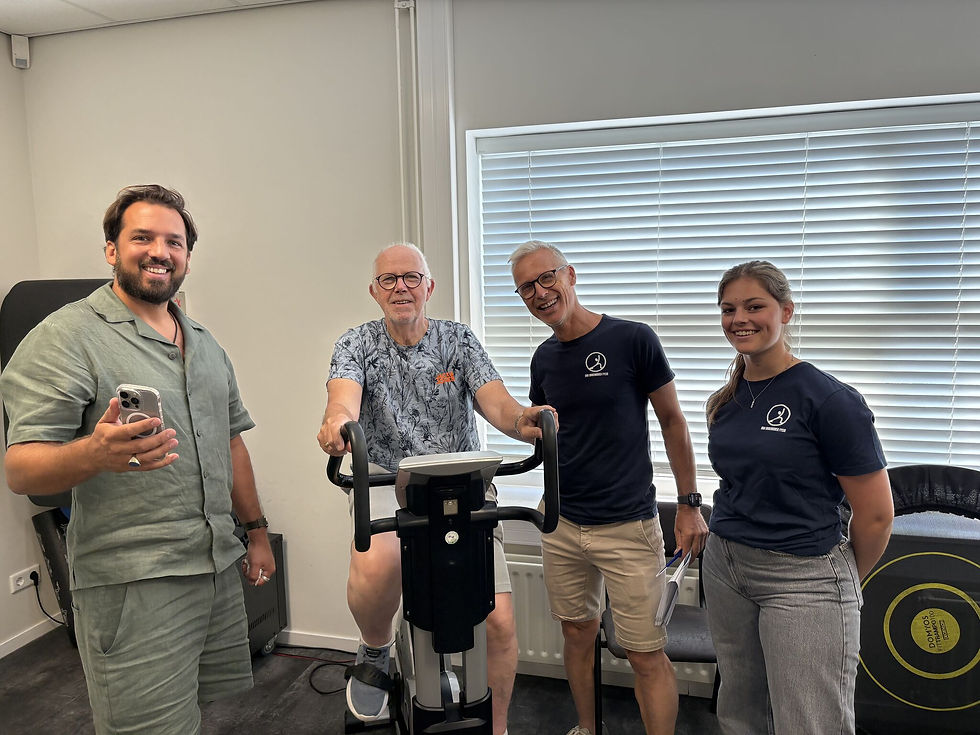Sweat measurements in sport
- Kevin van Hoovels

- Apr 11, 2023
- 2 min read
Updated: Jan 26, 2024
The main function of sweating is to regulate body temperature. This sweat consists mostly of water. In addition, our sweat contains electrolytes like salts and metabolites, like glucose and lactate, which can be valuable for sports applications.

A lot of research is being done on sweat rate and salt concentration to define how much a person should drink during exercise and how much salt a sports drink should contain. Since there are differences between persons and the sweat rate is highly dependent on the environmental temperature, a personalized approach is needed. Therefore, wearable sweat patches and sensors are being developed to define the personal sweat rate and content (mainly salts). In 2021 Gatorade launched a wearable sweat patch that can measure your sweat rate and sodium loss during exercise. This colorimetric patch collects sweat that be analysed with an app after your workout. This gives already useful insights, but there are no real-time and continuous measurements possible. To avoid these disadvantages, Nix biosensors recently launched the first real-time sweat rate and electrolyte loss sensor. This sensor can give continuous insights and drinking advice in real-time to athletes and workers in the heat.
Sweat lactate
Besides sweat rate and electrolytes, there is also growing interest in measuring lactate in sweat. In the past sweat lactate was already measured through the collection of sweat with absorbent patches during exercise. Unfortunately this lactate values in sweat can only give an average over the collection period and are diluted by the increase in sweat rate. Therefore, real-time sweat lactate measurements are needed.
Sweat lactate sensors
The last 10 years there is a tremendous growth in research on developing real-time sweat lactate sensors. With these sensors, sweat lactate can be measured in continuously and in real-time and give insights in what is happening with sweat lactate during exercise. Most studies found a positive relationship between sweat lactate and exercise intensity with an increase in sweat lactate with increasing intensity. Until now, none of these sensors have been commercialized, mainly because these sensor are enzyme based and difficult to reproduce. IDRO has encountered these problems and is the first commercially available sweat lactate sensor that can measure and analyse sweat lactate in real-time.







